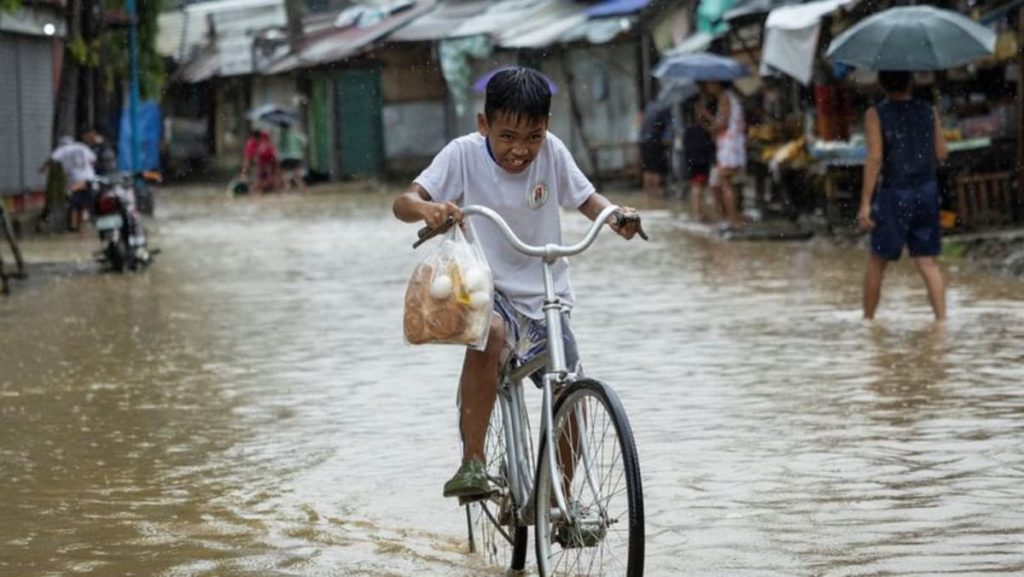Tropical storm Yagi, locally known as Enteng, caused at least 13 deaths in the Philippines as it made landfall in the eastern town of Casiguran in Aurora province. The storm knocked out power in the municipality, prompting the closure of schools and government offices in Manila and nearby provinces due to expected bad weather. Yagi had sustained winds of 75kmh and was located in coastal waters off the northern city of Laoag in Ilocos province. The state weather agency Pag-asa issued warnings as the storm moved northwest over the South China Sea.
In Antipolo, east of Manila, at least 7 people died from landslides and drowning. Four individuals were reported missing after being swept away by a landslide and flash flood. Search and rescue efforts were ongoing in the affected areas, with disaster officers coordinating rescue operations. Fatalities were also reported in other parts of the country, including two deaths in Northern Samar and one drowning in Negros Oriental. In the eastern city of Naga, three people lost their lives due to the storm’s impact. Additionally, two deaths reported in Cebu have not yet been officially confirmed as storm-related.
The Philippines, being prone to tropical storms and typhoons, typically experiences an average of 20 such weather disturbances annually. The government and local authorities are often prepared for these events, with disaster response teams mobilizing to provide assistance and support to affected communities. Emergency measures such as school closures and evacuation orders are implemented to ensure the safety of residents in high-risk areas. Despite these efforts, the destructive power of tropical storms can result in casualties and damage to infrastructure, highlighting the need for effective disaster preparedness and response strategies.
The impacts of tropical storm Yagi underscore the vulnerability of certain regions in the Philippines to extreme weather events. Landslides and flash floods are common occurrences during storms, posing a significant risk to communities in hilly or low-lying areas. The loss of life and damage to property caused by these natural disasters serve as a reminder of the importance of proactive measures to mitigate the effects of such events. Climate change also plays a role in exacerbating the frequency and intensity of tropical storms, making it necessary for governments to adapt and strengthen their resilience strategies.
As the Philippines continues to grapple with the aftermath of tropical storm Yagi, the focus shifts to recovery and rebuilding efforts in the affected areas. Emergency response teams are working to provide assistance to those in need, including search and rescue operations, medical support, and food distribution. Coordination between government agencies, non-profit organizations, and local communities is vital in ensuring a swift and effective response to the crisis. The resilience of the Filipino people in the face of natural disasters is evident in their ability to come together and support one another during challenging times. Despite the loss of life and destruction caused by tropical storm Yagi, the resolve of the nation remains strong as they work towards recovery and rebuilding for a more resilient future.


